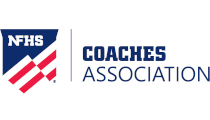High school athletics provides athletes with opportunities to learn many things that are not covered in academic curriculum. Athletes build relationships with their teammates and coaches, establish healthy exercise habits and experience the range of emotions that come with competition.
During these contests students feel the responsibility of representing themselves, their families, teams and schools. Coaches strive to have athletes who will always live up to high standards of conduct; however, if coaches do not have a plan to teach their athletes the importance of sportsmanship, they may be setting themselves up for potentially embarrassing situations for athletes, coaches and the school community.
Allow time to teach sportsmanship – eye contact and the handshake
As a coach, I find myself going over many necessities at the beginning of seasons – physical clearances, locations of trainers, emergency plans relating to weather and even parent meetings. Each of these elements is important to a successful season, but I also spend time with our athletes talking about the importance of how they conduct themselves. We need to have time to discuss what expectations we have for our athletes and explain how they align with school and societal expectations.
It may seem trivial but some students do not understand the importance of making eye contact and taking part in a genuine handshake. This is an important lesson for our students. During the practice before our first scrimmage, I make sure to explain the importance of first impressions; how eye contact and a handshake may open the door to a future job or business relationship. Even though the students may seem awkward at first, I have them practice it with each other. Many alumni have come back to say it was the first time they had been taught proper etiquette regarding establishing professionalism.
Just as important is to review when and to whom you issue a handshake. In tennis, participants shake hands with their opponents and the coaching staff during the reading of lineups and after the game. In basketball, it may be a handshake before and a high five after the game. Each sport may have some variation, but leaving this lesson to chance may increase the possibility that proper etiquette will not be followed.
The importance of perspective
As more pressure is placed on athletes to perform at high levels, I also spend time talking to athletes about perspective. Throughout any given competition day, athletes are given advice from other students, teachers and parents. With such focused attention on an after-school event, it is no surprise that some students inflate athletic participation to be more than it is.
Coaches can help give their athletes perspective by discussing where an athletic contest fits in terms of importance. Big games do come up in seasons; they can be benchmarks of athletic success, but the final result shouldn’t solely be based upon the final score.
There are times in my career where I have seen athletes compete tremendously and still lose. There are other times when I have seen them steamroll opponents with little effort. I find I am most proud of my athletes when they understand competition is a game in which participants can learn about themselves and their teammates. I want them to be able to gather data from both their wins and losses – to learn the importance of rating themselves by identifying their own strengths and weaknesses. When they understand they control effort regardless of outcome, they are better able to maintain a healthy perspective.
Rewarding sportsmanship and final thoughts
Throughout the nation we see teams, schools and leagues rewarding athletes with all-league recognition or specific athletic awards. These are great accolades for individuals and schools, but we also need to celebrate those individuals who are the models of sportsmanship. In our league, we have all-sportsmanship teams. During postseason league meetings, each coach must nominate a player from another team who stood out because of outstanding individual conduct and representation of his or her school. These names are shared with the newspapers and we even give them additional school recognition at awards nights. When we highlight these individuals, we allow their teammates to see that good conduct does not go unrecognized.
Whatever role sportsmanship plays in your program, proper planning will help minimize the risk of potentially embarrassing situations. It’s no secret that athletes want to perform well; they constantly look to their coaches for direction on how to improve themselves. As coaches we need to recognize how we can also use our sports as vessels to teach athletes the life skill of sportsmanship. By teaching sportsmanship, we empower them to be admired representatives of our schools – professionals who we will continue to be proud of as we watch their careers take flight.
Steve Amaro
Steve Amaro has been a USPTA certified tennis coach, athletic director (CMAA), and English teacher at Freedom High School in Oakley, California, for the past 13 years. He recently received his Ph.D. in Educational Leadership from St. Mary’s College in Moraga, California. A current member of the NFHS Coaches Publications Committee and the NIAAA Accreditation Committees, he is also the president of the North Coast Section Athletic Directors Association, a member of the California Interscholastic Federation (CIF) Athletic Administrator Advisory Committee, a representative at the section level of the California Coaches Association (CCA) and an NIAAA LTI instructor at the state level.
Most Recent Articles
- nfhs news NFHS Learning Center Delivers 25 Millionth Course
- Track & Field/Cross Country article Effective Communication with Athletes and Coaches
- nfhs news Player Equipment Changes Highlight 2025 High School Football Rules Revisions
- Player Equipment Changes Highlight 2025 High School Football Rules Revisions
- nfhs news Judgment Call on Second Contact Eliminated in High School Volleyball






